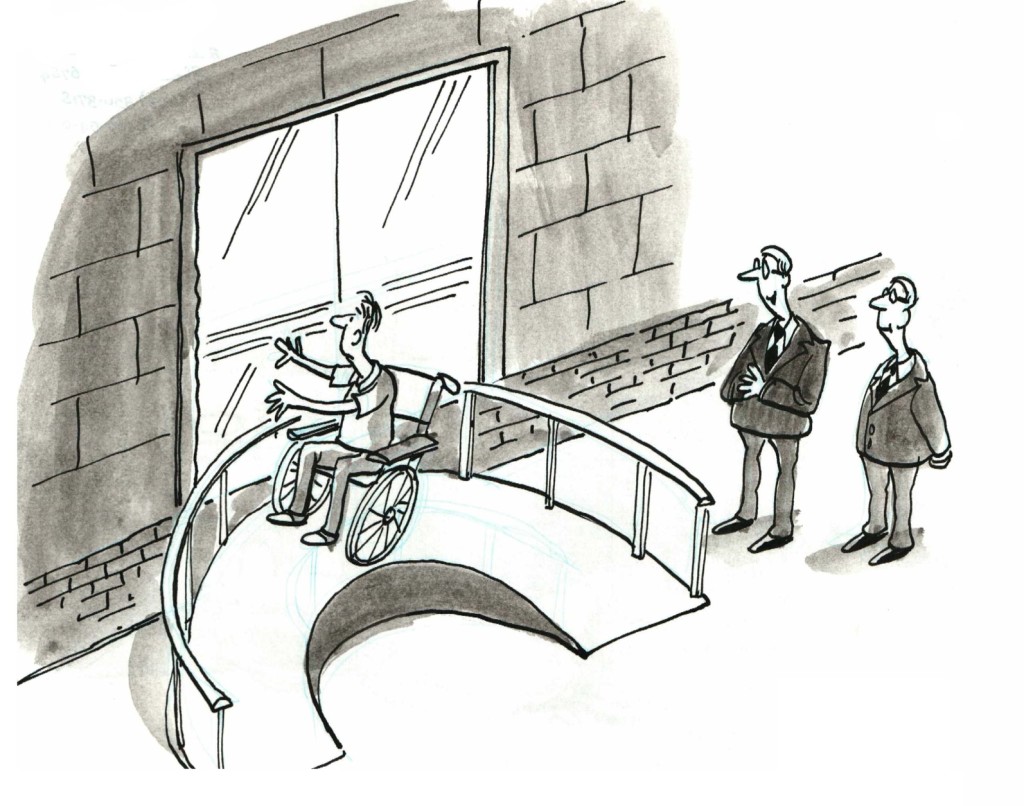 People who use wheelchairs may not shop at your store, eat in your restaurant or watch a movie at your theater if the building isn’t accessible to people with disabilities.
People who use wheelchairs may not shop at your store, eat in your restaurant or watch a movie at your theater if the building isn’t accessible to people with disabilities.
Providing proper accessibility to people with disabilities makes good business sense and complies with the Americans With Disabilities Act. Your business will lose customers if people with disabilities cannot gain access to it.
Here are some helpful tips:
Start with your parking lot. Your business will need at least one handicapped parking space per 25 cars, according to the Americans With Disabilities Act.
Remember to leave the parking space next to the handicapped space empty, and don’t forget to paint striped lines across it. This will give vans enough space to safely discharge passengers who use wheelchairs.
Curb cuts are another important means of accessibility for people with disabilities. Make sure there is at least one curb cut wide enough for a person who uses a wheelchair, according to the ADA.
Your building should have a ramp leading to the front door which is wide enough for wheelchair users. Don’t forget to install railings. Look for anything that could obstruct a wheelchair such as an uneven board or a nail that hasn’t been pounded in all the way. If you see this, make sure you get the problem fixed before allowing people who use wheelchairs to use the ramp.
Building entrances are another important place for handicapped accessibility. Avoid heavy doors that are hard for people with disabilities to open. Consider installing a power-assisted door opener to make it easier for people to enter the building. Make sure the button to open the door is within reach of people who use wheelchairs and not too high up.
Once inside the building, make sure there is a ramp or elevator wherever there is a flight of stairs.
Be sure your building accommodates the needs of people who have limited eyesight or who are blind. Install bright lighting throughout your building to help people with visual impairments to see better. Install signs written in Braille throughout your building.
Finally, don’t forget about your building’s bathrooms. Make sure there is at least one handicapped accessible stall in every bathroom that is wide enough for a person in a wheelchair to use. The sinks should not be too high and out of reach of people who use wheelchairs.
Please remember to be sensitive to the needs of everyone who visits your building.
